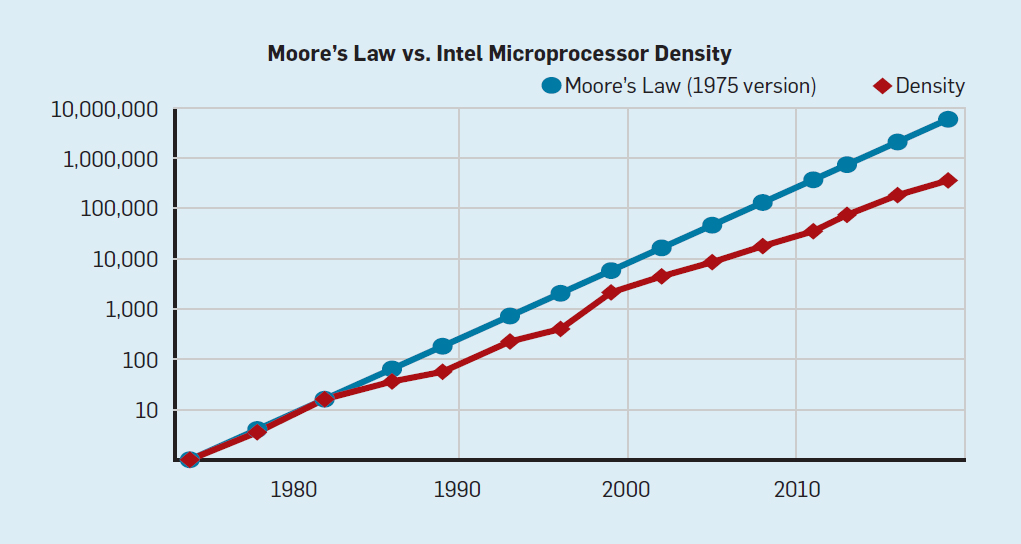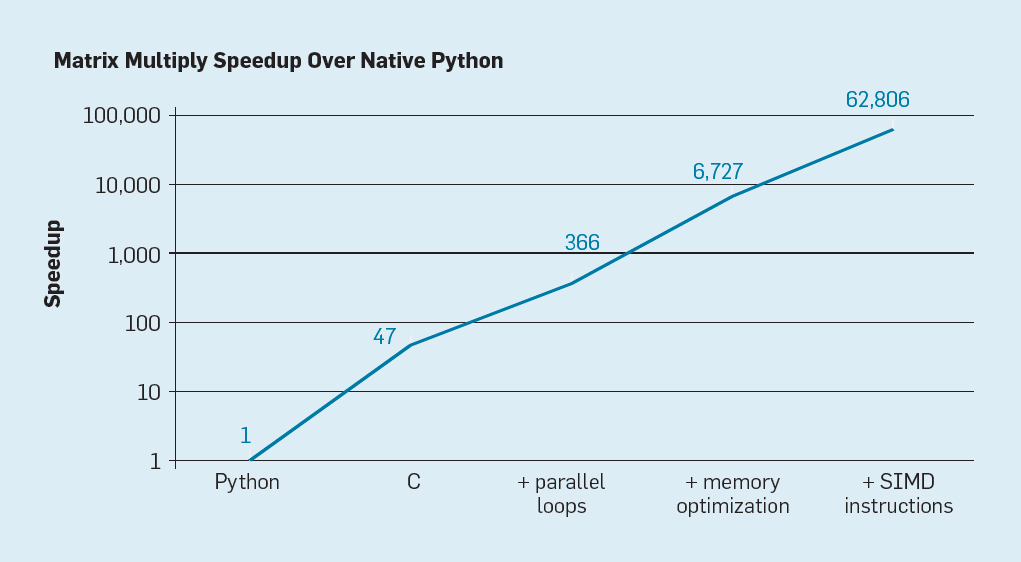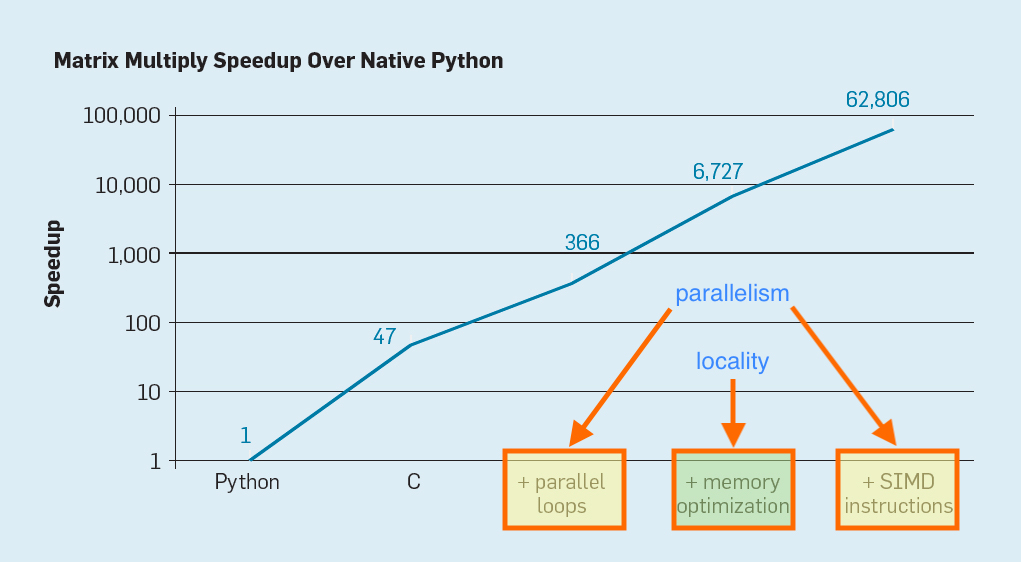Lecture 01: Intro and Motivation
Course Introduction and Structure
Expected Background (Programming)
- Object Oriented design in Java
- classes and inheritance
- interfaces
- exception handling
- generics
Expected Background (Conceptual)
- Basic data structures:
- linked lists
- stacks
- queues
- balanced trees
- (hash tables)
- Supported operations, and their complexities
Main Topics Covered
- multithreaded programming in Java
- mutual exclusion,
- concurrent objects,
- locks and contention resolution,
- blocking synchronization,
- concurrent data structures,
- scheduling, work distribution, and barriers,
- data parallelism (MapReduce and streams).
(Others as time allows.)
Course Materials
-
The Art of Multiprocessor Programming (Moodle -> Course Reserves)
- Notes (posted to Moodle)
- Recorded lectures
Course Focus
-
Principles of parallel computing:
- conceptual & technical issues that are fundamental to parallel programming
- indpendent of computing technology
- want provable guarantees for behavior
- We care about performance but…
- newest technologies will not be emphasized
- prefer methods that enhance our understanding of a problem
- Compare to
- Data Mining (COSC 254)
- Performance Evaluation (COSC 365)
Course Structure
- 2 Lectures / Week
- guided discussion
- small group discussion
- emphasize conceptual material
- 1 Lab / Week
- emphasise technical/programming/performance
- open ended
- Accountability groups
- meet once a week (you schedule)
- can be brief meeting
Evaluation
- Coding/Lab Assignments (bi-weekly, individual): 20%
- Written/Theoretical Assignments (bi-weekly, small groups) 20%
- Quizzes (weekly, individual) 20%
- Participation (everyone!) 10%
- Final project (small groups) 30%
Main Goals
- Write programs that are correct
-
always produce desired output (assuming no hardware errors…)
- Write programs that perform well
- many measures of performance
- our primary focus: speed and/or throughput
- other relevant measures:
- space/memory
- communication (minimize)
- power consumption (minimize)
Program Correctness
Goal: Guarantee that a program actually solves the problem you intend.
History of Computing Power: Moore’s Law
Transister density chip doubles every 2 years

Transister density for Intel chips (img source).
But Processor Speed Is Not Increasing!
| Year |
Transistors |
Clock speed |
CPU model |
| 1979 |
30 k |
5 MHz |
8088 |
| 1985 |
300 k |
20 MHz |
386 |
| 1989 |
1 M |
20 MHz |
486 |
| 1995 |
6 M |
200 MHz |
Pentium Pro |
| 2000 |
40 M |
2 000 MHz |
Pentium 4 |
| 2005 |
100 M |
3 000 MHz |
2-core Pentium D |
| 2008 |
700 M |
3 000 MHz |
8-core Nehalem |
| 2014 |
6 B |
2 000 MHz |
18-core Haswell |
| 2017 |
20 B |
3 000 MHz |
32-core AMD Epyc |
| 2019 |
40 B |
3 000 MHz |
64-core AMD Rome |
Question
In what sense are computers “faster” now than in 2000?
-
Latency has not improved (i.e., time to perform a single operation).
- Yet my current laptop is immeasurably faster than a desktop with a Y2K era Pentium 4 processor.
Answer: Parallelism!
What is Parallelism?
The ability to perform multiple operations simultaneously.
Examples:
- bit-level parallelism (e.g., adding two 32-bit numbers)
- instruction-level parallelism (multiple elementary instructions at a time)
- multi-core: independent processors operating at same time on same computer
- distributed networks: clusters, server farms, internet
- chefs in a kitchen, ants in a colony, people on earth
Promise of Parallelism
“Many hands make light work.”
- More processors \(\implies\) more operations per second!
- Greater throughput!
- Perform multiple operations at once!
Perils of Parallelism
More processors, more problems
- Some computations need to be done sequentially in order
- next step relies on result of current step
- Processors must share resources
- communication and sychronization are costly
- Nondeterminism
- different executions give different behavior
- algorithms must account for all possible executions!
Concurrent vs Parallel vs Distributed
-
Concurrent: multiple processes under way at same time
-
Parallel: multiple operations performed simultaneously
-
Distributed: independent processes have indpendent inputs, communicate with each other
Unavoidability of Parallel & Distributed Computing
Modern computing is inherently distributed!
- Different parts of the computer interact
- cores within processors
- processor registers, cache, main memory, IO, etc.
- Different computers interact
- local computer networks
- clusters and server farms
- internet
The Power of Parallelism I

The Power of Parallelism II

Historical Notes
- Explosion of computing power due to parallelism is recent (last 20 years)
- Theoretical foundations of parallel and distributed systems are older:
- My biased view:
- theoretical innovation facilitates practical innovation
- theory and principles of computing maintain their value independent of technological innovation
Embarrassingly Parallel Problems
We saw in lab: computing \(\pi\) with multiple threads:
n threads | pi estimate | time (ms)
-----------------------------------
1 | 3.14156 | 8674
2 | 3.14166 | 4540
4 | 3.14166 | 2229
8 | 3.14164 | 1675
-----------------------------------
Shared Objects
Consider a simple counter:
public class Counter {
long count = 0;
public long getCount () { return count; }
public void increment () { count++; }
public void reset () { count = 0; }
}
A Task
Increment the counter 1 million times.
An Idea
Use multithreading to increment the counter!
- We can finish quickly, and then take life easy.
A Thread
Define a Runnable object to increment the counter:
public class ThreadCount implements Runnable {
private Counter counter;
private long times; // number of times to increment counter
public ThreadCount (Counter counter, long times) {
this.counter = counter;
this.times = times;
}
public void run () {
for (long i = 0; i < times; i++) {
counter.increment();
}
}
}
Run Several Threads
public class BadCounter {
public static int NUM_THREADS = 4;
public static int TIMES = 1_000_000;
public static long TIMES_PER_THREAD = TIMES / NUM_THREADS;
public static void main (String[] args) {
Counter counter = new Counter();
Thread[] threads = new Thread[NUM_THREADS];
for (int i = 0; i < NUM_THREADS; i++) {
threads[i] = new Thread(new ThreadCount(counter, TIMES_PER_THREAD));
}
for (Thread t : threads)
t.start();
for (Thread t : threads) {
try {
t.join();
}
catch (InterruptedException e) {
}
}
System.out.println("Expected final count: " + NUM_THREADS * TIMES_PER_THREAD);
System.out.println("Actual final count: " + counter.getCount());
}
}
What happened?
- What is the final count?
- Is the behavior what you expected?
- How can we diagnose the behavior?
- Does the behavior persist if the number of increment operations is small?
Next Time
Theoretical Limitations of Parallelism


